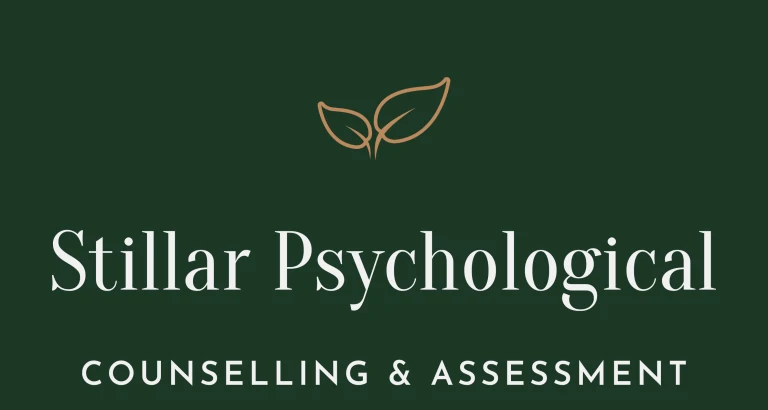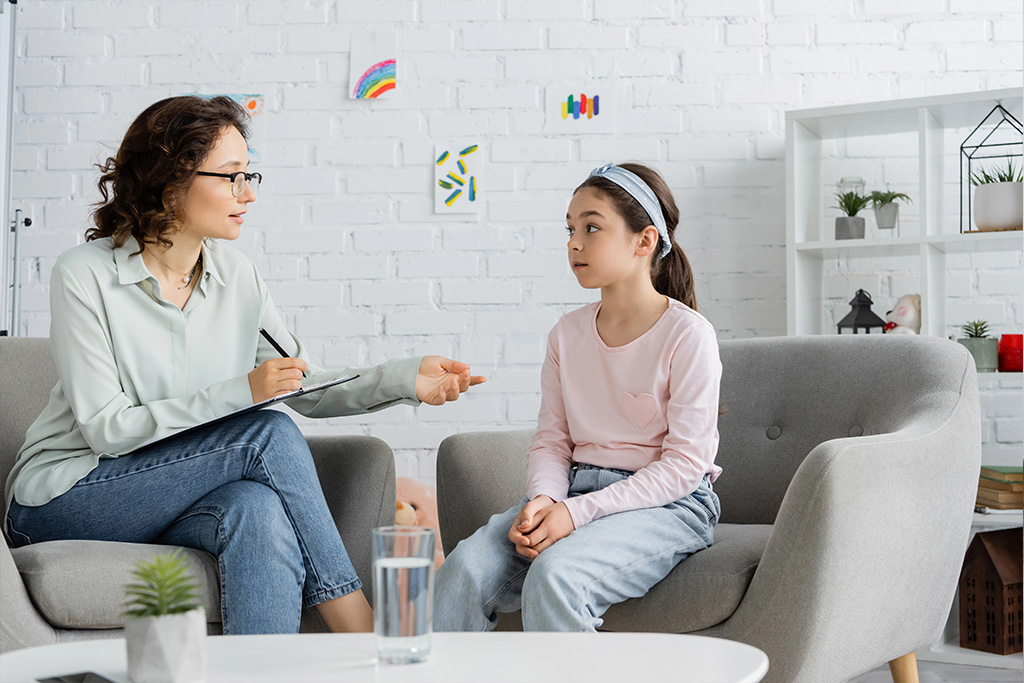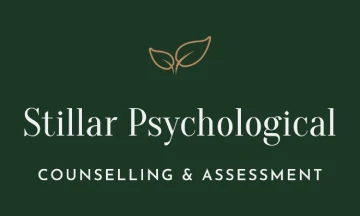Separation anxiety in children is a normal part of development, especially during the early years. It typically begins around eight months of age and can appear again during major life changes or developmental transitions, such as starting daycare, preschool, or a new school year. While some level of anxiety is expected, for certain children, the fear of being apart from a parent or caregiver can become more intense and disruptive to their daily life.
At Stillar Psychological, we provide mental health services for all ages across the lifespan, and we often speak with parents who are unsure how to best support their child during these difficult transitions. The good news is that there are gentle, effective strategies that can help both you and your child build confidence, reduce distress, and make separations feel more manageable.
In this blog post, we will explore the nature of separation anxiety in children, what signs to look for, and how to respond in ways that support long-term emotional growth.
Understanding What Separation Anxiety Is
Separation anxiety is an emotional response that occurs when a child becomes distressed at the prospect of being away from a parent or primary caregiver. It’s most common between infancy and early elementary school years, but it can emerge at different times based on personality, environment, and experiences.
Children experiencing separation anxiety might cry, cling, or refuse to let a parent leave. Some children may have physical symptoms like stomach aches or headaches before a separation. Others may struggle to sleep alone or express intense fear about a parent’s safety when they are apart.
It’s important to remember that this response is not a sign of poor parenting or a behavioural issue. Rather, it is a reflection of a child’s need for safety, reassurance, and predictability as they learn to navigate temporary separations.
What Triggers Separation Anxiety?
Certain life events or transitions can heighten a child’s sense of vulnerability and intensify separation anxiety. Common triggers include starting school or daycare, moving to a new home, a change in caregivers, or even a recent illness in the family. Global events, like the COVID-19 pandemic, have also disrupted routines and made many children feel uncertain about what to expect from their day-to-day environment.
Even positive transitions, such as the birth of a sibling or a parent returning to work, can lead to increased anxiety if the child is not yet equipped with the tools to self-soothe or feel secure without constant reassurance.
By identifying potential triggers, parents and caregivers can better anticipate when their child may need extra support and understanding.
Recognizing the Signs
While some children openly express their fears, others may show signs of separation anxiety in less apparent ways. These may include resistance to getting ready for school, frequent complaints of feeling sick in the morning, tantrums at drop-off, or clinginess at bedtime.
In more severe cases, children may develop school refusal, experience sleep disruptions, or avoid being in rooms alone at home. They may express worries about something bad happening to a loved one or feel unable to relax until they are reunited with a caregiver.
Recognizing these signs early allows for timely and gentle intervention. If your child’s symptoms persist or significantly interfere with daily functioning, it may be helpful to explore support options such as anxiety therapy with a licensed mental health professional.
Building a Secure Foundation
Children are more likely to feel confident exploring the world when they have a strong emotional bond with their caregivers. This connection, often referred to as a secure attachment, helps children learn that even if a parent leaves, they will return.
Consistency, warmth, and responsiveness play a key role in fostering this trust. Simple gestures like making eye contact when speaking, offering hugs before and after transitions, and using calm, predictable language can reinforce a child’s sense of emotional safety.
It also helps to be mindful of your own emotional state. Children are highly sensitive to their parents’ cues. When caregivers appear confident and relaxed during departures, it sends the message that everything is okay, which can reduce the intensity of the child’s reaction.
Create Goodbye Rituals
Having a short, consistent goodbye ritual can make transitions feel less abrupt and more predictable. Whether it’s a special handshake, a phrase like “See you after lunch,” or a wave from the classroom window, routines like these help mark the transition in a reassuring way.
Avoid sneaking away, even if it seems easier in the moment. While it may reduce an immediate outburst, it can undermine your child’s trust and make future separations more difficult. Instead, offer a warm, confident goodbye and let your child know when you will return.
Be consistent with timing and follow through on your return. Over time, this builds a pattern your child can rely on and helps reduce anxiety.
Gradual Exposure Can Help
In many cases, children benefit from gradual exposure to separation. This approach involves slowly increasing the amount of time spent apart in a supportive and controlled manner.
Start with short separations in a familiar environment, such as leaving your child with a trusted family member while you run an errand. As they adjust, you can increase the length of time and move to less familiar settings, like daycare or school.
Reinforce their bravery by acknowledging their effort and reminding them of their past successes. Saying something like, “I know it was hard to say goodbye this morning, but you did it, and I came back just like I said I would,” can help strengthen their coping skills.
Offer Reassurance Without Over-Accommodating
While it’s important to validate your child’s feelings, try not to reinforce avoidance behaviours. For example, allowing a child to stay home every time they become upset at drop-off may provide temporary relief, but can make the anxiety worse in the long term.
Instead, provide reassurance that they are safe, that the separation is temporary, and that their feelings are okay. You might say, “It’s normal to feel nervous when trying something new, but I know you can handle it, and I’ll see you this afternoon.”
Finding this balance between empathy and encouragement helps children build confidence and resilience over time.
Prepare Them in Advance
Children often respond better to change when they know what to expect. Before a new experience like starting school, talk about the upcoming change in a calm and positive way. Use storybooks, social stories, or role-playing to help your child visualize the day and ask questions.
If possible, visit the location ahead of time, introduce them to teachers or staff, and show them where you’ll drop them off and pick them up. Familiarity can significantly reduce anxiety and increase comfort during transitions.
Providing a simple object like a family photo or a small token from home can also serve as a source of comfort throughout the day.
Practice Separation During Play
Play is an excellent tool for helping children process emotions, including separation anxiety. Dolls, action figures, or stuffed animals can be used to act out scenarios where one character says goodbye, has an adventure, and then comes back home.
These activities allow children to explore themes of leaving and returning in a low-stakes environment, and they can begin to understand that separation does not mean something bad will happen. You can also use play to explore common fears, such as a parent getting lost or being forgotten, and then model safe, reassuring resolutions.
Imaginative play not only helps children express their feelings but also fosters a sense of mastery over difficult experiences.
Support Emotional Literacy
Helping your child label and talk about their feelings builds emotional literacy and self-awareness. When they say things like “I don’t want you to go,” try responding with, “It sounds like you’re feeling sad that I’m leaving. That’s okay. I’ll be back soon, and we’ll have our special time then.”
Using books, visuals, and emotion charts can also help children develop a vocabulary to express themselves. As children become more comfortable naming their emotions, they are more likely to use words instead of behaviours like crying, yelling, or clinging.
When a child knows that their feelings are heard and accepted, they are more likely to feel secure, even during tough moments.
Be Patient with the Process
It’s completely normal for progress to be slow and for setbacks to occur. Some days may be easier than others, and your child may regress during illness, vacations, or transitions.
During these times, try to stay consistent with routines and maintain a calm, reassuring presence. Avoid punishing anxious behaviours or labelling your child as “dramatic” or “overreacting,” as this can increase shame and make the anxiety worse.
Instead, offer empathy and gentle encouragement. Let them know that you believe in their ability to manage their feelings and that you’re there to help them grow through the discomfort.
When to Seek Extra Support
If your child’s separation anxiety continues for an extended period, becomes more intense over time, or begins to interfere with their ability to participate in school, play, or other age-appropriate activities, it may be time to explore professional support.
Therapy can provide children with tools to manage anxiety more effectively and help parents feel confident in supporting their child’s emotional needs. At Stillar Psychological, we often work with families navigating issues related to anxiety, including separation anxiety, and we recognize how overwhelming it can feel.
You don’t have to wait until things get worse to reach out. Early intervention can make a meaningful difference in helping your child build resilience and independence.
Encouraging Growth One Step at a Time
Managing separation anxiety in children takes time, patience, and understanding. As your child learns to cope with temporary separations, they are also building essential life skills like trust, self-regulation, and adaptability. While it’s hard to see your child in distress, your consistent support is a powerful tool that can help them feel safe enough to grow through discomfort.
At Stillar Psychological, we are here to support you through these transitions. Our team provides counselling and psychological services for all ages, including therapy for anxiety in children. Whether you’re looking for parent coaching, emotional support for your child, or guidance through a challenging life stage, we’re ready to work with you to find the best path forward.
If you believe your child could benefit from professional help, we invite you to connect with us. Together, we can take steps toward a more confident and secure future for your family.





















